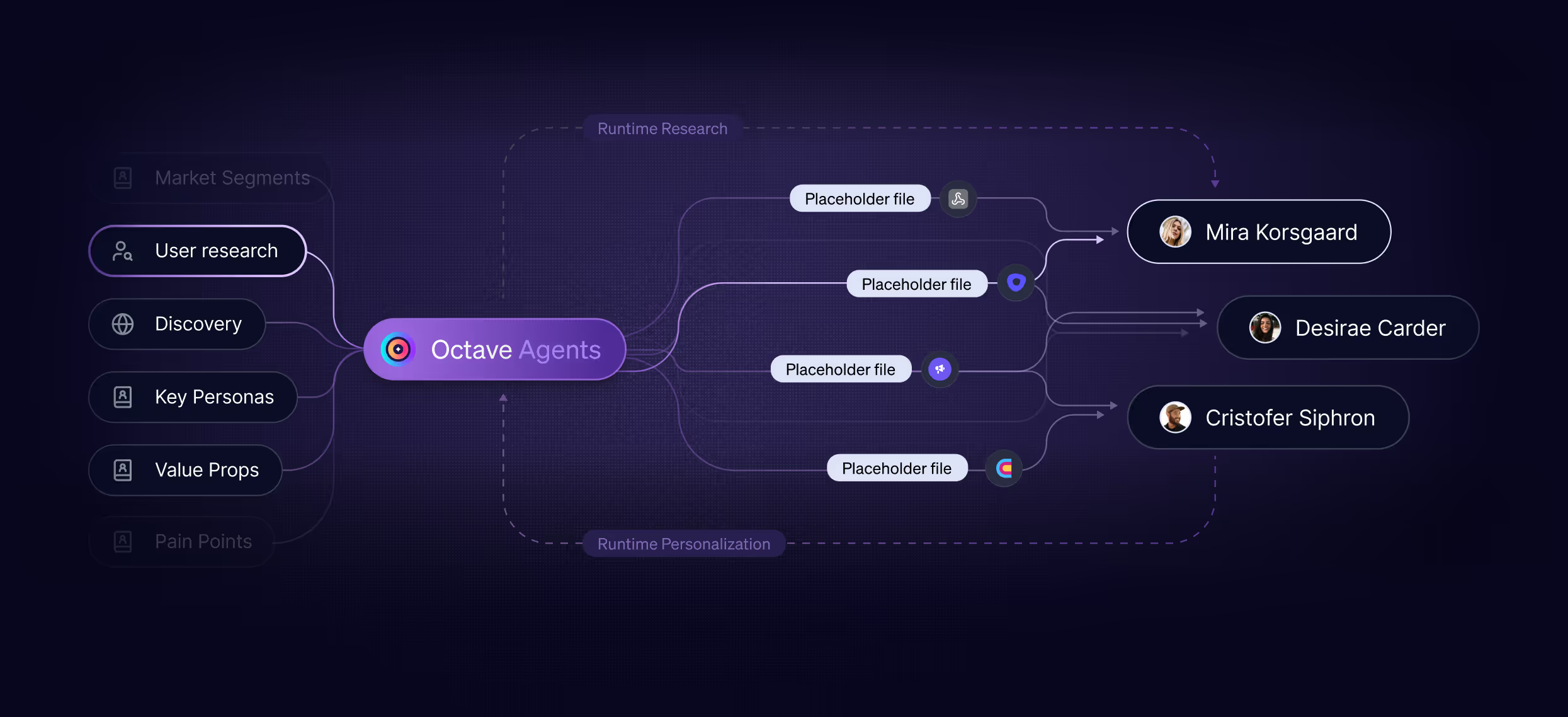Contextualization vs. Personalization

Lazy personalization will always lose to deep contextualization
There's no shortage of takes about how bad AI-written emails are. Many of them are fair, but the issue isn't the writing itself, it's what people are asking AI to do.
If you treat AI like a digital stalker, tasking it with pulling up someone's college, a blog post from 2018, and last week's weather, it's going to give you something that sounds off. Not because it's incapable, but because the prompt is flawed. You've asked it to cobble together surface-level trivia, not real substance.
Shallow personalization disguises itself as relevance but usually falls flat
The dominant idea in outbound right now is that personalization equals connection. Find a detail, mention it, and you've earned attention. But stuffing an email full of scraped facts and calling it thoughtful is like throwing confetti in the air and calling it a gift. It might catch someone's eye, but it doesn't deliver anything of value.
Most of what passes as personalization isn't particularly meaningful. Referencing mutual connections, or calling out the city they live in might be technically accurate, but they rarely make the email feel more relevant (in a vacuum). If not incorporated thoughtfully, you sound like you're trying too hard, or worse, it feels invasive.
Contextualization is rooted in real understanding of your buyer's world
Contextualization is different. It doesn't start with facts about a person, it starts with insight into their job, their goals, and the tradeoffs they're navigating.
This kind of message comes from time spent with customers, watching deals fall apart, learning why people hesitate, and refining the product to match what actually matters. It’s the part most people skip because it’s hard, but only when you know what your buyers are trying to solve, what holds them back, and how your product actually helps can you write a great message.
A contextualized message doesn’t need to flatter because it proves you’re relevant by showing you understand what someone’s dealing with and why your solution makes sense.
AI can be effective when you give it the right job
AI isn't necessarily bad at writing, it's bad at guessing what matters when the inputs are weak. When you give it the right structure and it's deployed in the right environment, it can be both fast and genuinely useful.
Here are a few things it can do extremely well:
- Identify who someone actually is: Not just their job title, but their role, motion, seniority, and whether they fit into a known persona or buying pattern with your company.
- Understand what their company actually does: AI can ingest and summarize a company's website, job listings, press mentions, and product language faster than any rep could manually. It connects dots that would take a human hours to piece together.
- Write messages that are structured and sharp: A cold email isn't a novel. It has a specific job: introduce a problem, offer a solution, and invite a response. That's well within the capabilities of a properly trained model, especially when paired with clear positioning and strong context.
That being said, there are moments when human insight is still the better tool
There are absolutely times when AI shouldn't be doing the heavy lifting:
- If you've spent years in the industry you're selling to and know the buyer's day-to-day intimately
- If your TAM is small and every deal justifies a handcrafted message
- If you're working high-stakes enterprise deals where nuance is everything and the windows of opportunity are very small
In those moments, your own understanding will beat a model's assumptions every time. And that's the point: AI isn't a replacement for human insight. It's a force multiplier, especially when you're dealing with complexity, speed, or scale.
But even here, there’s value in working with AI to sharpen your messaging. When you’re figuring out what to say, iterating on your messaging, or refining how you talk about a use case, you still need a centralized, flexible place to develop that thinking. Octave becomes your space for crystallizing those insights collaboratively, quickly, and without starting from scratch every time.
Octave exists to make contextual selling easier and scalable
We didn't build Octave to be another tool that cranks out average emails faster. We built it to help you synthesize, sharpen, and operationalize what you've already learned from your customers.
Octave helps you take your positioning, pain points, and go-to-market knowledge and turn it into a system. It helps you identify the right prospects, researches those companies/leads to surface the details that matter, generates contextualized messages based on your insights, and soon will continuously listen to what you're saying to customers, giving you signals on what's landing, what isn't, and where to adjust.
Think of it as a loop where the more you learn about what resonates, the better your context gets. The stronger your context, the more effective your messaging to customers becomes.
A dozen shallow personalization facts stitched together won't outperform a single message grounded in a real understanding of your buyer. But when you combine the deep context you've earned with AI's ability to apply it at scale, the results compound.
.svg)